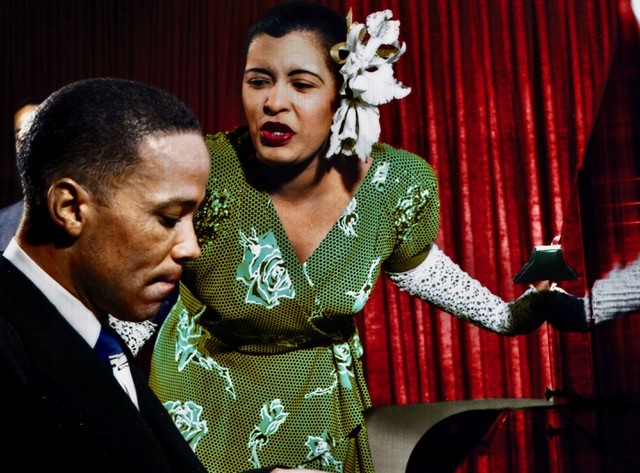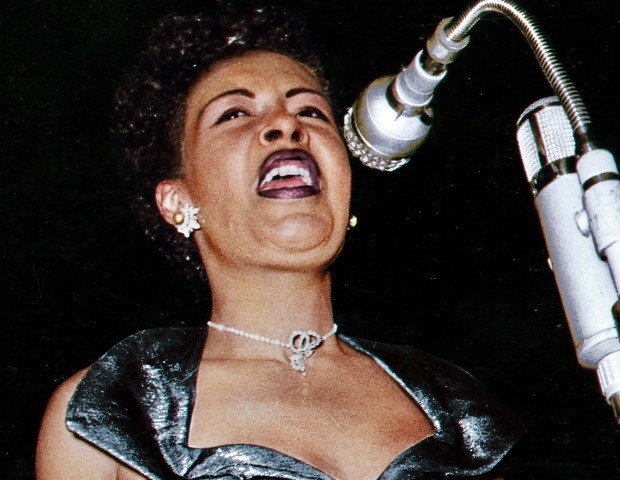By Dwight Brown NNPA News Wire Film Critic
She had an enigmatic presence. A unique, restrained voice with distinctive phrasing. Wrote and sang the iconic protest song “Strange Fruit.” That’s her. Billie Holiday. Lady Day. Died too young and now a faint memory.
Eleanora Fagan was born on April 7, 1915 in Philadelphia and died July 17, 1959 at the age of 44 in NYC. Her legacy is clear, though the facts of her existence are not. Even her autobiography Lady Sings the Blues (1956) is a bit sketchy.

In the 1960s, journalist Linda Lipnack Kuehl attempted to reconstruct Holiday’s life journey with a bio book. She spoke to friends, family and associates amassing 200+ hours of interviews and 125+ audio tapes, only to die mysteriously before she could finish her project.
Documentarian James Erskine (Battle of the Sexes) and producer Barry Clark-Ewers helm this ambitious bio-doc and gathered, edited and assembled the communiqués from Kuehl’s source materials into a fairly evocative portrait. A non-fiction film resembling a visual/audio album. One with her photos, footage, performances and recordings propelled by conversations that backtrack to Holiday’s turbulent life.
Hearing first-person recollections from Holiday’s cousin, Charles Mingus, Tony Bennett, Sylvia Syms, Count Basie, a former pimp and FBI agents who tracked her drug deals is quite sobering. Viewing images of her on 16mm and 35mm videos, masterfully colorized by the Brazilian artist Marina Amaral, adds an intense you-are-there aspect. The depths of the filmmakers’ dedication to this project are best evidenced in the still photographs from Holiday’s last stage performance. It’s almost as if Lady Day is stepping out of her grave at St. Raymond old Cemetery in the Bronx to tell her own story.
For fans, learning how the ultimate jazz singer crafted songs like “God Bless the Child” and “Strange Fruit” is a revelation. Hearing how she suffered sexual abuse, dabbled in prostitution and succumbed to drugs and alcohol makes you wonder how she even survived for four decades. A cousin attests, “Billie turned tricks when she had to.” Holiday laments in her torch song “Fine and Mellow”: “My man, he don’t love me. Treats me awful mean. He’s the lowest man. That I’ve ever seen.”

Discovering how Holiday adopted her singing style adds to her aura. Louis Armstrong’s trumpet was her model: “I always wanted to sing like an instrument,” declared Holiday. And she did, from the proscenium at the Apollo theater, recording studios with Benny Goodman, the front of Count Basie and Artie Shaw’s big bands and world-renowned Carnegie Hall.
The revealing footage also notes the indignities Lady Day faced (couldn’t stay in white hotels, forced to darken her skin), her mercurial bisexual love life and a childhood that left her tormented. A parallel subplot centers around the biographer Kuehl’s ambiguous death, which involved her falling or jumping out a window. Two women. Two tragedies.
A feature film (Lady Sings the Blues), countless books and other documentaries have plowed this same turf. But credit writer/director James Erskine, colorist Marina Amaral, editor Avdhesh Mohla, music supervisor Kle Savidge and cinematographer Tim Cragg for making this a visual journey of great distinction. A unique remembrance of a remarkable but ill-fated chanteuse who sang the truth.
In Select Theaters and Available on TVOD Nationwide on December 4, 2020.
Visit NNPA News Wire Film Critic Dwight Brown at DwightBrownInk.com and BlackPressUSA.com.




